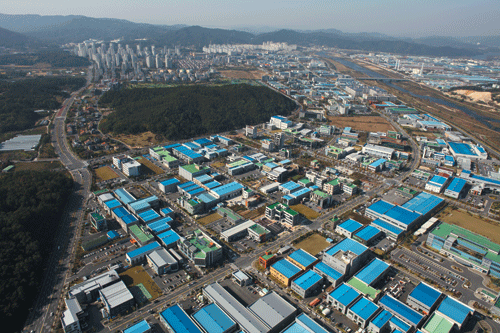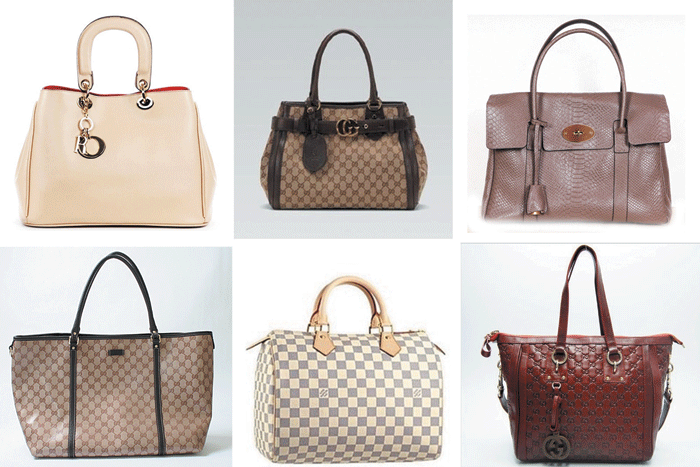Korea at a crossroads between continued prosperity and fadeout
President Choi Yong-sik of the Turning Age Economics Research Institute (TAERI) says that times are changing quickly and Korea is running behind others in adapting itself to the rapidly changing surroundings of the economy, industry and finance around the world.
“What can Korea live on ten years after?” questions President Choi.
“When you travel to different countries,” says Choi, “you come across some big cities which once enjoyed an unsurpassed prosperity but which are now in a such a rundown shape you wonder if these cities did really have such a good time in the past.”
In an essay written by President Choi of TAERI published by Korean-language daily Hankook Ilbo and a number of other publications, Choi concludes that these cities have failed to adopt themselves in time to the changing environment of the world and should have found new areas for development for continued growth and survival.

In particular, the cities which enjoyed prosperous steel and shipbuilding industries in the past are now as good as ‘ghost cities.’
What is reason behind this?
The reason is because the installation and equipment industries such as steel and shipbuilding industries could not yield value-added enough to keep up with the increasing incomes of the people. At the present level of incomes of the people, the steel and shipbuilding industries cannot survive when the per-capita GNI of the people reach US$35,000.
Why is that?
It is because even the developing countries, who are retarded in economy and technological standard, can manage and run such industries if they have money (capital).
The installation-equipment industries that cannot survive the income level of US$35,000 are not limited to steel and shipbuilding. They include the oil refining and petrochemical industries.
The volume of exports by the Korean installation-equipment industries last year accounted for more than 30% of the total volume of Korean exports, including oil products (9.4%), petrochemical products (8.6%), shipbuilding (6.5%) and steel products (6%).
These industries, which account for such a large portion of our economy, will start facing limits within the next five years at the longest. There are strong possibilities of their becoming stultified due to challenges from China and other late-comer developing countries.
Such indications have already shown in other fields of Korea’s industry a long time ago. Most of the labor-intensive industries, such as clothing industry, have already lost their international competitiveness. The white goods of Korea such as refrigerators and washing machines, which are simple assembly products, have already lost their competitiveness to China and other developing countries.
Facing such limits are not limited to the installation-equipment industries and the labor-intensive businesses. The semiconductor industry (accounting for 10.3% of the entire volume of Korean exports), the LCD (Liquid Crystal Display) which accounts for 4.4% of Korea’s total exports and wireless communications equipment (3.1% of the total exports), too, are expected to face such limits in not too distant future.

The reason is that these industries have failed to make adequate reforms as in the past such as technological renovation, upgrading of quality of products and reduction of production cost.
If Korea should continue to fail in making technological renovation, product-upgrading or reduction of production cost, she will have to have a tough competition with China and other developing counties, and ultimately the Korean export industry will face an unsurmountable wall.
When Korea should actually face these phenomena, what would happen to the Korean economy?
If Korea should fail to develop new industries that can cope with the era of per-capita GNI of US$40,000 or US$50,000, Korea’s economic growth will naturally stop and the market will be much worse than how it is today. Nay, Korea might have to face a critical time, probably a catastrophe. This is because for oil, food and other major raw materials, Korea is almost wholly dependent on import.
In fact, last year Korea imported a total of US$313.1 billion worth of oil, food and other industrial raw materials. For oil alone, Korea used about US$100 billion. For capital goods, Korea used a total of US$144.2 billion. The total amount expended for such purposes totaled US$515.6 billion.
The Korean economy will continue to live and the national economy will properly function only when Korea exports the equal amount of goods to overseas markets.
What would happen if Korea should face a wall in our exports ten years after? Korea would face an economic catastrophe and it would ruin the economic life of the Korean people.
The most serious phenomenon in Korea today is that the economy has already been suffering a stagnation for the past 12 years. If Korea should fail to come out of this tunnel of economic doldrums quickly, even the most internationally competitive Korean companies, too, would suffer losses in their business management and revenue-making, and would have to face the same fate of the once world’s top electronics giant Sony and Nissan that at one time led the automobile industry of the world.
Why is that?
It is because domestic consumption is much more important than export.
If Korea should fail to extricate herself from the rut of economic doldrums, what waits for her would be nothing but catastrophe.
They say that Korean exports account for nearly 50% of the GDP.
It is wrong.
It is because export means the amount of transactions. GDP means the value-added. When you compare the two, you have to match them at the same level.

According to the overall economic studies of 2010, the total sales were 4,332 trillion Won and the total amount of value-added was 1,173 trillion Won. It shows that the value-added accounted for about 27% of the total amount of sales. Computed at this rate, the value-added of Korea’s exports was 1,483 trillion Won and the GDP US$1 trillion 129.5 billion. This means that the proportion of export was only 13%.
In contrast, domestic consumption was as much as 87%. This means that if domestic consumption is low the companies make poor business profits no matter how competitive the company might in export. Eventually, such companies would have the face same fate of the world-class companies may be, such as Sony and Nissan, who eventually went bankrupt.
Now how can Korea find its way out?
There are some ways. What are they?
First of all, it is most important and urgent for Korea to try to revive the economy. However, this is something which is not very closely related with the main topic of discussion here. So we skip it.
Next, Korea should try to find an industry or industries that can survive the age of US$50,000 to US$70,000 in per-capita GNI. If Korea actively develops them, she will be able to continue her economic prosperity. Then Korea would be able to find a way to join the camp of the advanced countries of the world.
What should Korea make?
First of all, Korea should try to find and develop ‘display products’ (top-brand goods). Run-of the-mill handbags in the market will sell each for less than one 50,000-Won note or more in some cases. The top-brand ones sell for several million Won each and sometimes as much as for tens of millions of Won.
The sneakers, too, are priced around 20 to 30 thousand won a pair when they don’t have a brand name. When they have a name, however, they will sell for prices ten times higher than the unknown brand products.
There are many other products that you can make differentiated from other goods for a much higher value-added, and they include clothes, automobiles, watches and fountain pens.
If you raise the brand name of your products, you can make your goods survive the era of US$50,000-US$70,000 in per-capita GNI, even including those which you might have thought have already lost their competitiveness.
How can Korea make it happen? This topic, too, requires an adequate range of discussions and therefore it will be skipped at this time.
Secondly, Korea should try to develop products that are supported by advanced science and technology. In making these things, you can also benefit from the reduction of the production cost because the development of technology is fast and it also brings upgrading of the products.
However, you should try to keep yourself ahead of your competitors from the developing countries. If you succeed, your products can survive not only the era of US$50,000 in per-capita income but also the era of US$100,000.
So, how can you develop such products?
Will the ‘Creative Economy’ (that the Korean government is now pushing ahead with) be an answer?

No. In the whole world, there is no county where advanced science and technology came before the economic development. To the contrary, the economy developed first and it entailed the development of advanced science and technology. When the economy is slow, no investment made in any advanced science or technology succeeded. In other words, economic recovery is pre-requisite to the development of advanced science and technology. Thirdly, it is the precision machinery and fine chemistry plus the parts and materials industry. These products require a long period of development and a high degree of science and technology, which do not permit the pursuit or competition from developing countries.
Realistically, Korea has been suffering from chronic deficits in the balance of her trade with Japan and the amount ranges between 20 to 30 billion US dollars each year. These high-tech goods account for the most of Korea’s trade deficits with Japan. These technology-intensive products can survive the era of US$50,000 in per-capita GNI and even US$100,000.
As we have so far discussed, Korea is now at a critical crossroads between continued economic prosperity and a downward fall. And, surely, there also is a way open for Korea’s continued economic prosperity. However, to this matter it appears that no one is paying a proper attention and the situation is the same with the government, political parties and even the economic circles and the society in general. This is the biggest problem faced by the Korean economy today.
The government is bent only on spending more money and additional distribution of business profits to the households, which are all very easy solutions. If these easy means can save a country out of its economic doldrums, there would be no country in the whole world who would suffer from economic difficulties or crisis.
Such means will soon face its own limits, and this has been empirically proven in many countries of the world.
You can get the precious things only when you shed your sweat and work hard. Recovery of the economy is the same thing and we should shed our sweat putting in hard work.
It all requires labor.
Those countries who have enjoyed economic prosperity should be studied closely, paying a special attention to the history of their economic development and the hard-working history of the corporations. Only this way, Korea can recover her economy.
In conclusion, recovery of the economy is pre-requisite to the development of display goods (top-grand products), advanced-technology goods and precision machinery or fine chemicals or the parts and materials industry.
No one will invest in their development unless the economy recovers its vitality.
In order to recover the economy, the government, businesses and the people should be ready to shed their sweat.

